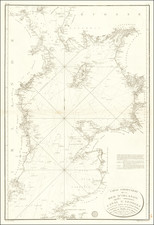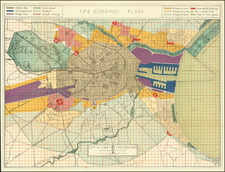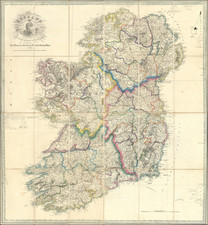Scarce map of Mounster, which appeared in the 1810 Dublin edition of Pacata Hibernia.
Includes a large inset map of Corke.
First published in London in 1633, the Pacata offers an impartial, contemporary account of affairs in Ireland during the latter stages of the Nine Years War, as well as details on the conduct of the campaign in Munster. The work also includes a series of accompanying maps.
Irish historian Standish O'Grady characterizes Pacata Hibernia as "the most famous of the Anglo-Irish historical classics". The author, Sir Thomas Stafford (1574-1655), was a secretary to Sir George Carew, the 1st Earl of Totnes. Believed to be the illegitimate son of Carew, Stafford also served under him as a captain in Munster during the campaign against Hugh O'Neill.
A large collection of manuscripts relating to Ireland were donated to Stafford by Carew at the time of the latter's death. While this collection would have acted as a primary source for his work, it is stated by Stafford that he also drew on Carew's own writings in composing his Pacata Hibernia.
John Speed (1551 or '52 - 28 July 1629) was the best known English mapmaker of the Stuart period. Speed came to mapmaking late in life, producing his first maps in the 1590s and entering the trade in earnest when he was almost 60 years old.
John Speed's fame, which continues to this day, lies with two atlases, The Theatre of the Empire of Great Britaine (first published 1612), and the Prospect of the Most Famous Parts of the World (1627). While The Theatre ... started as solely a county atlas, it grew into an impressive world atlas with the inclusion of the Prospect in 1627. The plates for the atlas passed through many hands in the 17th century, and the book finally reached its apotheosis in 1676 when it was published by Thomas Bassett and Richard Chiswell, with a number of important maps added for the first time.









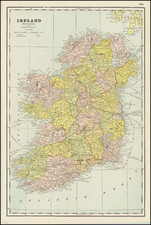
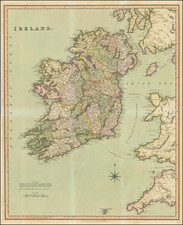
![[Southwestern Ireland] De Zuijdwest hoeck van Yerlandt tusschen de Blasques en Mesanhooft](https://storage.googleapis.com/raremaps/img/small/75314.jpg)
